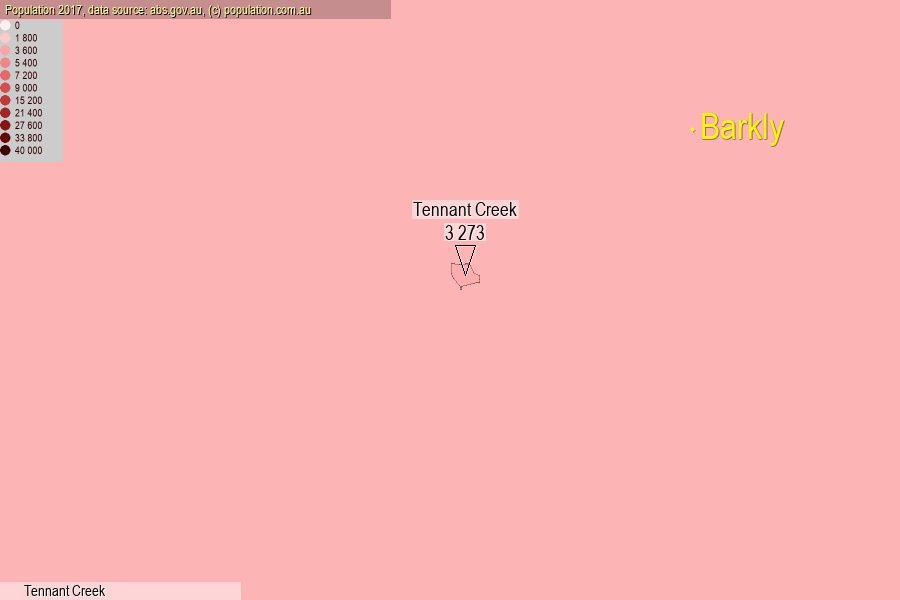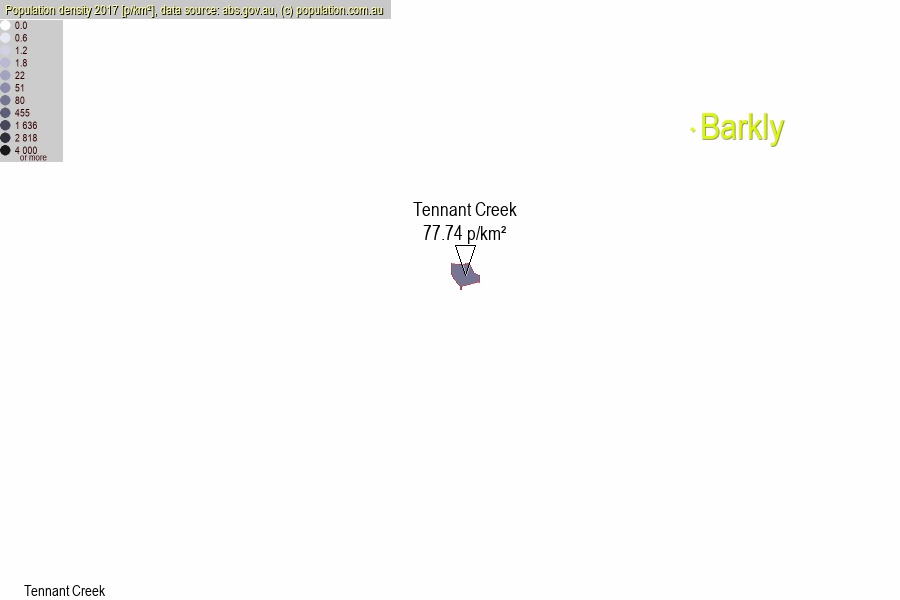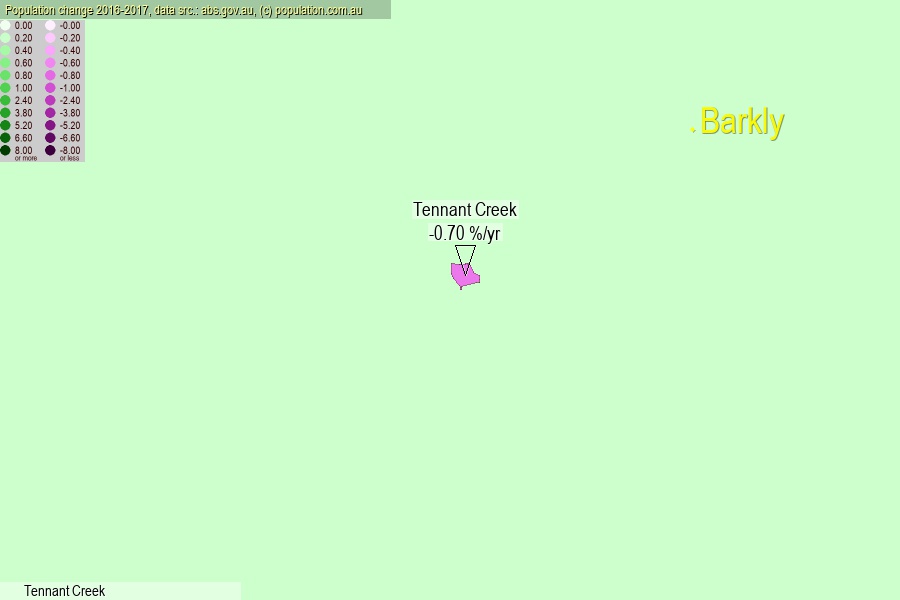 population.com.au
population.com.auLast official estimated population of Tennant Creek (as Statistical Area Level 2) was 3 273 people (on 2017-06-30)[2]. This was 0.01% of total Australian population and 1.327% of NT population. Area of Tennant Creek is 42.10 km², in this year population density was 77.74 p/km² . If population growth rate would be same as in period 2016-2017 (-0.7%/yr), Tennant Creek population in 2025 would be 3 095. [0]



Click to enlarge. Tennant Creek is located in the center of the images.
Population [people], population density [p./km²] and population change [%/year] [2]
View borders » (new window) [4]
[1991-1992] +7.83 %/Yr.
[1992-1993] +3.32 %/Yr.
[1993-1994] +1.72 %/Yr.
[1994-1995] +1.14 %/Yr.
[1995-1996] +0.83 %/Yr.
[1996-1997] -0.48 %/Yr.
[1997-1998] -3.38 %/Yr.
[1998-1999] -4.33 %/Yr.
[1999-2000] -4.79 %/Yr.
[2000-2001] -6.00 %/Yr.
[2001-2002] -0.94 %/Yr.
[2002-2003] -0.03 %/Yr.
[2003-2004] +1.05 %/Yr.
[2004-2005] +3.95 %/Yr.
[2005-2006] +3.02 %/Yr.
[2006-2007] +2.54 %/Yr.
[2007-2008] +2.68 %/Yr.
[2008-2009] +1.23 %/Yr.
[2009-2010] +0.34 %/Yr.
[2010-2011] -0.68 %/Yr.
[2011-2012] +0.17 %/Yr.
[2012-2013] -0.60 %/Yr.
[2013-2014] -2.63 %/Yr.
[2014-2015] -1.88 %/Yr.
[2015-2016] -1.38 %/Yr.
[2016-2017] -0.70 %/Yr.
[0] Calculated with linear interpolation from officially estimated population
[1] Read more about SA2 and Australian Statistical Geography Standard (ASGS) on abs.gov.au
[2] Population data from Australian Bureau of Statistics (Population and density: 2017; change: 2016-2017)
[3] Digital Boundaries: Australian Statistical Geography Standard (ASGS) 2016.
[4] Border coordinates are simplifyed using Ramer-Douglas-Peucker algorithm.